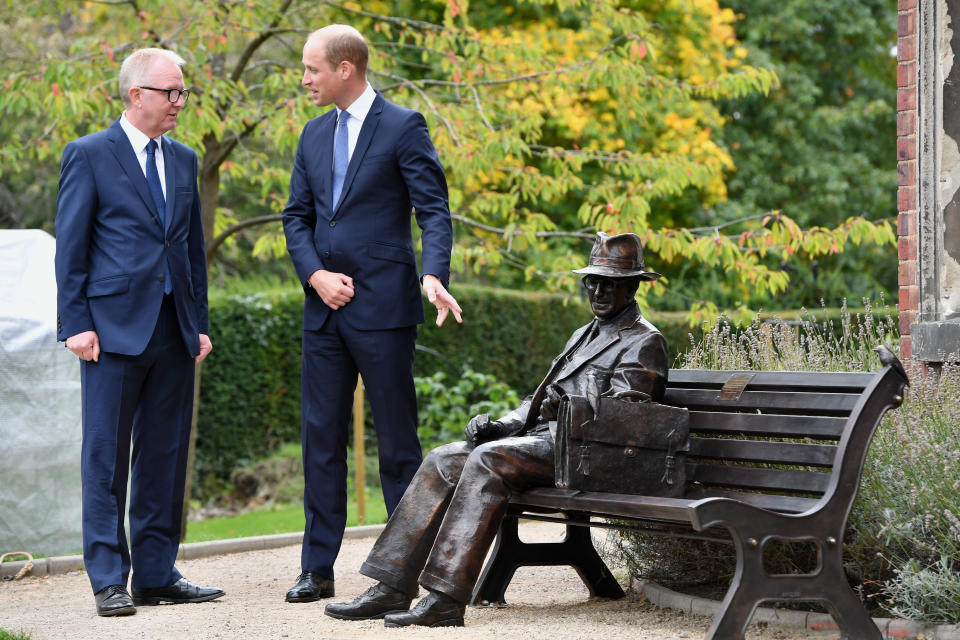Statue unveiled of British spy who helped thousands of Jews escape from Nazi Germany

The Duke of Cambridge unveiled a very special statue of Major Frank Foley CMG, in Mary Stevens Park, in Stourbridge on Tuesday afternoon.
Highbridge-born Major Foley was a British spy working as an undercover passport control officer in Berlin, who saved over 10,000 people from persecution in Germany during the 1920s and 30s.
The M16 agent “bent the rules” and helped thousands of Jewish families escape from Nazi Germany by issuing them with visas, after Kristallnacht (Night of Broken Glass) and before the outbreak of the Second World War.
According to the Jewish Virtual Library, Foley utilised legal means whenever possible, or exploited loopholes in British immigration laws. The cost of a visa for entry to Palestine was £1,000 and this was a sizeable sum at the time, especially for many Jews whose bank and other assets had been frozen by the Nazi authorities.
Foley helped Elisheva Lernau (born Elsbeth Kahn) who could only pay £10, by deciding that the balance of £990 would be available to her the minute she landed in Haifa, so he issued her a visa for Palestine.
READ MORE ON YAHOO UK
Fred and Rose West’s daughter fears her parents ‘killed 30 more women’
Student, 26, killed in US shark attack ‘was engaged to be married’
Teen questioned by police after ‘g-force’ stunt leaves boy, 11, with ‘horrific injuries’
Watch: Ryanair passenger films baggage handler stealing from suitcase
He even went into Nazi concentration camps to help Jews escape and hid them in his home, risking his own life in the process. Foley could expect no diplomatic immunity, as he was operating as a spy.
As a result of this act, Foley was recognised as one of the Righteous Among the Nations and has even been dubbed the ‘British Schindler.‘
In 1939 and 1940, he was a passport control officer in Norway until the Germans invaded and on 1 January 1941, he was awarded the Companion of the Order of St. Michael and St. George (CMG) as a Captain, in respect of services to the Foreign Office.
He returned to Berlin after the war under the cover of Assistant Inspector General of the Public Safety Branch of the Control Commission in Germany, where he was involved in hunting for ex-SS war criminals.
In 1949, Major Foley retired to Stourbridge where he lived quietly for almost a decade and died there in 1958. His story was published by his widow Katharine Eva Foley in the Daily Mail in 1961.

The Duke of Cambridge met members of Foley’s family and descendants of some of the people whom he saved to remember his life and achievement.
William also spoke with Ian Austin MP and representatives of the Holocaust Educational Trust, who have worked together to spearhead this campaign to honour Major Foley.
Before unveiling the sculpture by artist Andy de Comyn, the Duke also visited the University of Birmingham, where he attended the first National SkillForce Prince William Award Graduation Ceremony. He then went to Acorns Children’s Hospice in Selly Oak to learn about their specialist care and to celebrate the charity’s 30th anniversary.




